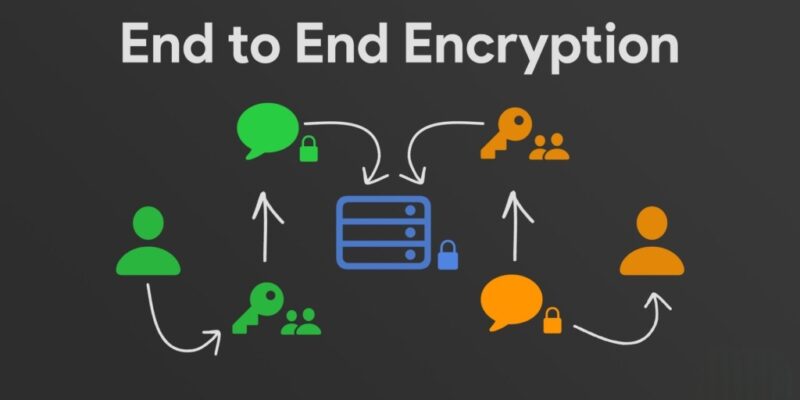Imagine a courier carrying a valuable parcel across several cities. The parcel passes through checkpoints, warehouses, and delivery vans — yet no one along the route can open it. Only the sender and the receiver know the code to unlock it.
That’s the essence of end-to-end encryption (E2EE) in distributed applications — securing information so that even if it travels across multiple servers or networks, it remains confidential and intact.
The Importance of True Confidentiality
In today’s world, data travels through a maze of APIs, cloud servers, and databases. Without proper encryption, each stop becomes a potential risk point. Traditional encryption often secures data “in transit” or “at rest,” but there’s a gap — what happens in between?
End-to-end encryption closes that gap. It ensures that only the communicating parties — say, a user’s device and the final database — have the decryption keys. Even the intermediaries, like application servers, can’t read the data.
This approach is especially vital in systems like messaging apps, financial transactions, and healthcare platforms where data sensitivity is high.
Learners joining a full stack developer course in Pune often explore how encryption mechanisms fit within system architectures, understanding not just how to code securely, but how to think securely.
The Role of Encryption Keys
At the heart of every encryption system lies a key — or, more accurately, several keys. Public and private key pairs form the cornerstone of E2EE.
The sender encrypts data with the receiver’s public key, and only the receiver’s private key can decrypt it. This ensures that even if hackers intercept the message, it’s meaningless without the correct key.
However, managing keys in distributed environments is challenging. Keys must be generated, rotated, stored, and retired safely. Developers rely on key management systems (KMS) or hardware security modules (HSMs) to automate and secure this process.
It’s a dance between security and performance — keys must be complex enough to resist brute-force attacks, yet efficient enough not to slow down data flow.
Challenges in Distributed Architectures
Distributed systems, by their nature, are complex webs of interconnected components — microservices, APIs, databases, and third-party integrations. Each component introduces a potential vulnerability.
One common pitfall is encrypting only the communication layer (for instance, using HTTPS) while ignoring data at the application or storage layers. True end-to-end encryption requires consistent security policies throughout the system.
Moreover, developers must ensure that logs, backups, and caching mechanisms don’t inadvertently store unencrypted data.
Incorporating these layers seamlessly demands both architectural planning and careful implementation — skills that are increasingly taught in advanced developer training programmes such as a full stack developer course in Pune.
Integrating E2EE into Real-World Applications
Implementing end-to-end encryption isn’t a plug-and-play solution. Developers must integrate encryption logic directly into the application stack. Here’s how it typically works:
- Encryption at the Client: Data is encrypted before it ever leaves the user’s device.
- Transmission through Secure Channels: Encrypted data passes through servers that act merely as messengers.
- Decryption at the Endpoint: Only the intended receiver, such as a database or another client, holds the decryption key.
For example, a distributed healthcare system might encrypt patient data in a mobile app before sending it to cloud storage. Even the cloud provider can’t read the data. This design not only builds user trust but also ensures compliance with data privacy laws such as GDPR and HIPAA.
Balancing Security and Performance
While encryption strengthens security, it also adds computational overhead. Encrypting and decrypting large volumes of data can slow down applications if not optimised. Developers often use hybrid approaches, combining symmetric and asymmetric encryption to achieve balance — symmetric keys for speed, asymmetric for secure key exchange.
Another challenge is scalability. As distributed systems grow, managing encrypted sessions and rotating keys across multiple servers requires automated orchestration.
This is where modern DevSecOps practices come into play — integrating security early in the development pipeline ensures encryption remains efficient and scalable.
Conclusion
End-to-end encryption represents more than just a technical feature — it’s a mindset. It symbolises trust, integrity, and respect for user privacy. In distributed applications, it acts as the invisible armour that shields data from prying eyes.
As our systems grow more interconnected, developers who understand how to embed encryption principles throughout the architecture will stand out. Learning frameworks, patterns, and security design in depth prepares professionals to tackle this challenge confidently.
After all, in the digital age, safeguarding data is not merely about protecting bytes — it’s about protecting people.













Comments